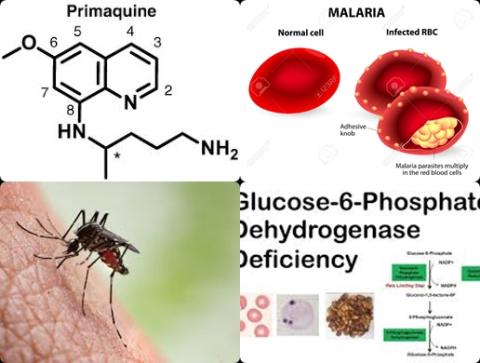
Objectives:
Malaria causes a reduction in haemoglobin that is compounded by primaquine, particularly in patients with glucose-6-phosphate dehydrogenase (G6PD) deficiency.
The aim of this review article is to determine the relative contributions to red cell loss of malaria and primaquine in patients with uncomplicated Plasmodium vivax.
Study design:
This review article included 29 studies with a total of 3,421 patients (1,692 (49.5%) with normal glucose-6-phosphate dehydrogenase status, 1,701 (49.7%) with unknown status and 28 (0.8%) deficient or borderline individuals).
Patients were followed for 28 days in 14 studies (n = 1,841), 29 to 42 days in 7 studies (n = 388) and more than 42 days in 8 studies (n = 1,192).
The majority of patients were male (64.6%, 2,211/3,421).
The median age of patients was 19 years (inter-quartile range (IQR) 9-32), with 1,314 (38.4%) patients younger than 15 years.
Results and conclusions:
The investigators found of 1,975 patients treated with chloroquine alone, the mean haemoglobin fell from 12.22 g/dL [95% CI = 11.93 to 12.50] on day 0 to a nadir of 11.64 g/dL [95% CI = 11.36 to 11.93] on day 2, before rising to 12.88 g/dL [95% CI = 12.60 to 13.17] on day 42.
The investigators found in comparison to chloroquine alone, the mean haemoglobin in 1,446 patients treated with chloroquine plus primaquine was -0.13 g/dL [95% CI = - 0.27 to 0.01] lower at day of nadir [p = 0.072], but 0.49 g/dL [95% CI = 0.28 to 0.69] higher by day 42 [p 0.001].
The investigators found on day 42, patients with recurrent parasitaemia had a mean haemoglobin concentration -0.72 g/dL [95% CI = -0.90 to -0.54] lower than patients without recurrence [p 0.001].
The investigators found 7 days after starting primaquine, G6PD normal patients had a 0.3% (1/389) risk of clinically significant haemolysis [fall in haemoglobin > 25% to 7 g/dL] and a 1% (4/389) risk of a fall in haemoglobin > 5 g/dL.
The investigators concluded primaquine has the potential to reduce malaria-related anaemia at day 42 and beyond by preventing recurrent parasitaemia. Its widespread implementation will require accurate diagnosis of glucose-6-phosphate dehydrogenase deficiency to reduce the risk of drug-induced haemolysis in vulnerable individuals.
Original title:
The haematological consequences of Plasmodium vivax malaria after chloroquine treatment with and without primaquine: a WorldWide Antimalarial Resistance Network systematic review and individual patient data meta-analysis by Commons RJ, Simpson JA, […], Price RN.
Link:
https://www.ncbi.nlm.nih.gov/pmc/articles/PMC6670141/
Additional information of El Mondo:
Find more information/studies on malaria and food fortification/malnutrition right here.